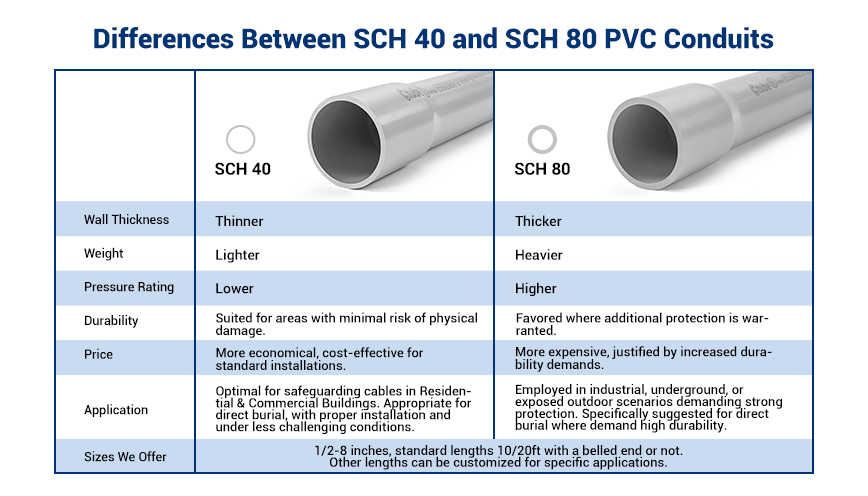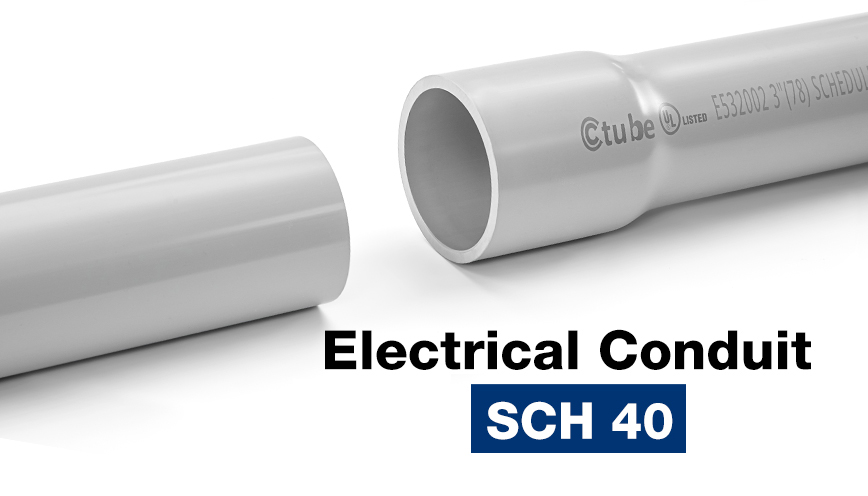How deep should Schedule 40 PVC conduit be buried?
Properly installing 附表 40 PVC 导管 requires determining the optimal burial depth to balance protection needs with accessibility. While the NEC recommends a minimum of 18 to 24 inches, special applications may require greater depths up to 3 feet or more.
Minimum Code Requirements
The National Electrical Code (NEC) recommends a minimum burial depth of 18 to 24 inches for Schedule 40 PVC conduit. Local electrical codes may require depths up to 30 inches depending on applications and exposures. Always verify the exact minimum depth stipulated by local codes to ensure compliance.
Factors Impacting The Optimal Depth
Protection
Deeper burial provides greater protection against:
• Mechanized landscaping and digging tools
• Impacts from falling objects
• Crushing by heavy equipment over time
• Exposure to corrosive chemicals in some soils
Location
Conduit running under:
• Roadways requires depths of 30 to 48 inches under asphalt and 30 to 36 inches under concrete for vehicles and snow plows.
• Driveways needs at least 30 inches of cover to protect against impacts and vibrations from cars.
Environment
Schedule 40 PVC conduit in:
• Harsh, alkaline or acidic soils may necessitate greater depths up to 3 feet to limit chemical exposure and prevent moisture wicking into conduit over time.
• Wet, poorly drained areas may also benefit from increased depth to keep conduit drier.
Accessibility
Ease of access affects optimal burial depth by balancing the need for:
• Future repairs and modifications – shallower depth enables quicker access
• Minimal future disruption – deeper ensures longevity but repairs become more difficult.
Recommended Installation
Proper installation techniques help maximize conduit protection:
• Cushion the trench bottom with sand or soil
• Center conduit and slope down
• Add tracer wire for locating
• Backfill in thin layers and compact thoroughly using a plate compactor or tamper.
Special Applications
For high voltage circuits or direct burial applications:
• Greater depths up to 30 to 36 inches provide larger safety margins and help conduit withstand heavier mechanical stresses long-term.
Maintenance
Periodic inspections:
• Shortly after backfilling look for proper compaction and slight soil mound over conduit.
• Following heavy rains check for soil settling, cracks or moisture intrusion that indicates damage.
In summary, optimal burial depth for Schedule 40 PVC conduit balances many factors. While code minimums provide basic protection, special applications and harsh conditions may require significantly deeper installations to ensure long-term performance and reliability. Proper installation and periodic inspections further maximize conduit service life
How deep should Schedule 40 PVC conduit be buried? 阅读更多 "










